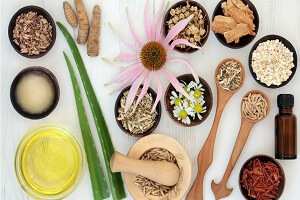Ayurvedic Medicine is based on Observations of seers and rishis made thousands of years of past, who analysed the rhythms of the Universe and the complex relationship of the flow of energy throughout the human body and mind. They used meditation, experimentation and discussion to refine those findings. According to Ayurvedic beliefs, each man or woman is a distinctive amalgamation of physical, psychological and emotional characteristics, constituting of three different energy types called doshas. Vatta is the energy that controls motor functions, in addition to vital functions like blood flow, heartbeat, breathing and blinking. Balanced, it results in creativity, but causes stress if it is unbalanced. The next energy is Pitta, involved with the body’s metabolic processes like digestion, absorption, nutrition and temperature. It is thought to be the source of contentment and intellect, and its imbalance may lead to ulcer and anger management issues.

Last, Kapha is the elemental energy that is involved in bodily development, providing water to all body parts in addition to the skin. Additionally, it keeps the immune system. Kapha addresses the psychological side and its equilibrium is expressed as feelings of forgiveness and love, otherwise it contributes to insecurity and jealousy. According to Ayurvedic Medicine, every individual has these three different energies or humours, but they differ because one dosha could be dominant in an individual and another dosha might be weaker. The medication hence caters to the specific constitution of the patient as opposed to the symptoms, since the objective is to achieve balance of the doshas based on the inherent condition of the elemental energies. Going from here, many medicinal preparations and surgical procedures are concocted to treat many illnesses.
After understanding the Constitution of the individual, the buy ayurvedic medicine online practitioner would focus on many other aspects such as their character, equilibrium, body dimensions, diet plan, psychic may, digestive capacity, physical health and the age of the individual. Some others may use up to five criteria for diagnosis. The first step after diagnosis is to make sure that the patient clinics self-hygiene. Afterwards, a remedy may be Prescribed, usually derived from plants and herbs native to India. These are generally composed of cardamom, cinnamon, milk, bones, gall-stones in addition to fats for ingestion or topical use. Minerals such as sulfur, arsenic, lead, gold and aluminum sulphate may also be utilized, officially called the custom of rasa shastra. In the event of accidents, oil, tar, application of heat in addition to animal and herbal preparations to cause clotting could be used to prevent bleeding.
